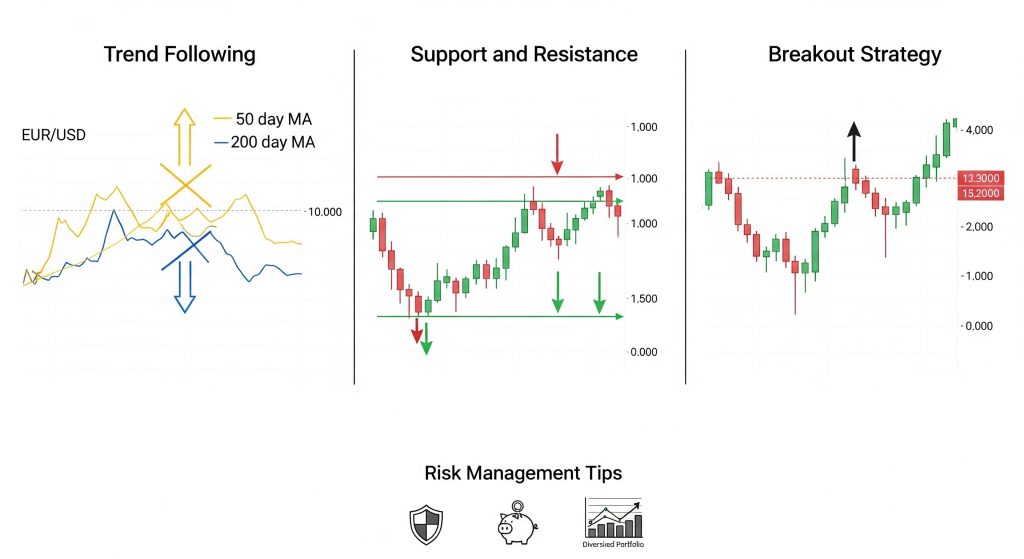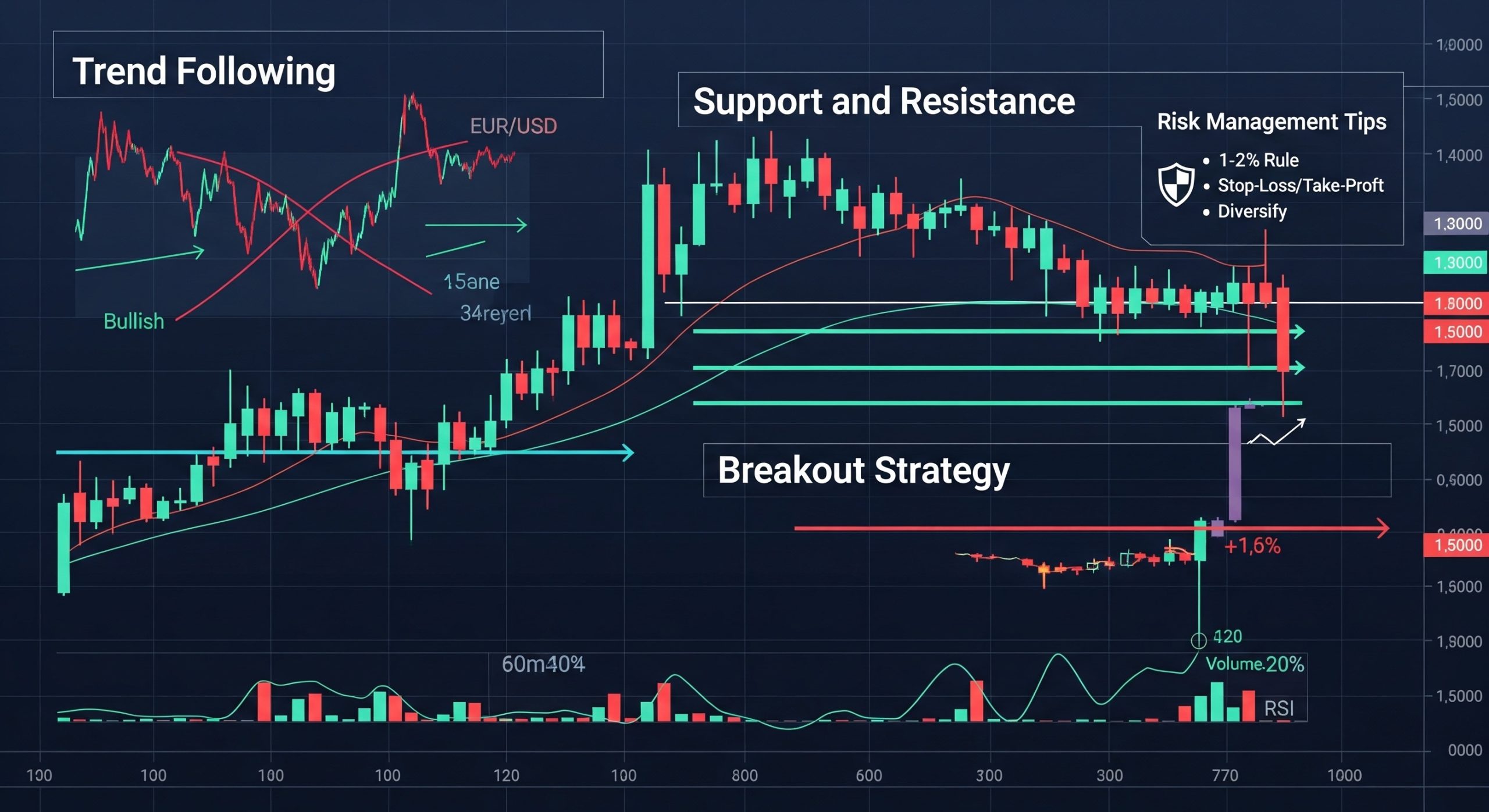Basic Forex Trading Strategies for Beginners
Forex trading for beginners can seem daunting at first, but with the right strategies, it becomes manageable and rewarding. Understanding the fundamentals of currency pairs, market trends, and risk management lays the groundwork for consistent success. This guide covers three basic yet powerful trading strategies tailored to novice traders.
 Trend Following Strategy
Trend Following Strategy
Trend following is one of the simplest and most effective forex trading strategies for beginners. The idea is to identify and follow the prevailing market direction, uptrend, downtrend, or sideways movement. Use moving averages (e.g., the 50-day and 200-day) to confirm trends:
- When the 50-day moving average crosses above the 200-day, it signals a bullish trend, prompting buy positions.
- When the 50-day moves below the 200-day, it indicates a bearish trend, suggesting sell positions.
By trading in the direction of the trend, beginners minimize the risk of entering against strong market momentum.
Support and Resistance Strategy
- Support and resistance levels are price points where currency pairs tend to pause or reverse. Identifying these levels can help new traders predict market behavior:
- Support acts as a floor; price often bounces upward after hitting this level.
- Resistance acts as a ceiling; price may drop after reaching this level.
Forex trading for beginners can use simple chart tools to draw horizontal lines at recent highs and lows. Enter buy orders near support and sell orders near resistance, combining this approach with tight stop-loss orders just below support or above resistance to limit risk.
 Breakout Strategy
Breakout Strategy
Breakouts occur when price moves beyond established support or resistance levels, often leading to strong momentum in the breakout direction. For beginner traders:
- Wait for price to close beyond the resistance or support line on a higher time frame (e.g., 4-hour chart).
- Confirm the breakout with increased trading volume or a momentum oscillator like the Relative Strength Index (RSI).
- Enter the trade in the breakout direction, placing a stop-loss just inside the breakout boundary to guard against false breakouts.
Risk Management Tips
Effective risk management is vital in forex trading for beginners. Apply these principles consistently:
- Never risk more than 1–2% of your trading capital on a single trade.
- Use stop-loss and take-profit orders to automate exits.
- Diversify by trading multiple currency pairs rather than placing all capital in one.
- Keep a trading journal to analyze wins, losses, and emotional biases.
Final Thought
Mastering forex trading for beginners starts with simple, proven strategies and disciplined risk management. By following trends, trading support and resistance levels, and capitalizing on breakouts, new traders can navigate the forex market with confidence and build a solid foundation for future growth.





